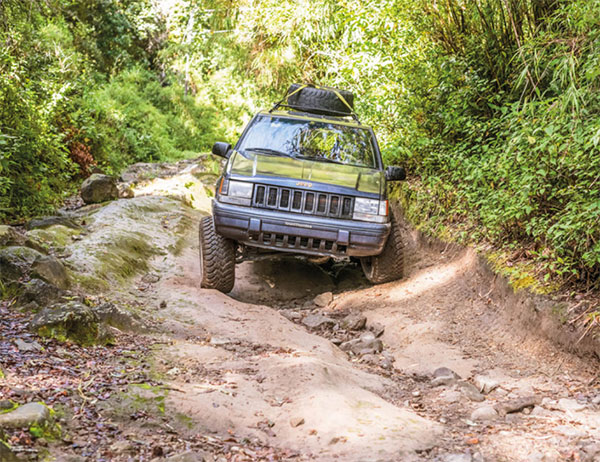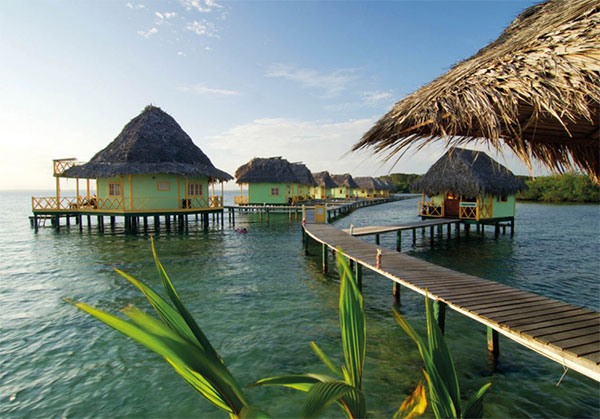Outside of Boquete
What Panama lacks in volume in terms of coffee, it makes up for it in quality. Shade-grown varieties grown in the rich volcanic soil have given Panama a name in the premium coffee market, surging past the better-known Costa Rica. In particular, it’s the varietal called Gesha, or Geisha, a plant of Ethiopian origins that mutated in Boquete’s climate, giving it tea-like qualities that have helped make it the most expensive coffee in the world. One of the oldest producers in the region, Casa Ruiz (www.caferuiz-boquete.com), offers guided tours led by Ngäbe-Buglé guides on Mon–Sat. It’s the largest operation in the area.
The Chiriquí Highlands offer some of the best white-water rafting in Central America, ranging from intense Class III to V kayaking and rafting to relaxed floats, to take in the mountain landscape. The Chiriquí River, and more remote Chiriquí Viejo River, feature the most technical whitewater, with Class III to Class V rapids. These rivers can only be rafted from July to November when water levels are high. The Class II Esti River is the tamest experience, suitable for families with young children, while the Class II-III Gariche River is slightly more technical. One rafting agency is Boquete Outdoor Adventures (www.boqueteoutdooradventures.com).
Volcán Barú National Park
Covering the Pacific side of the 3,475m (11,500ft) extinct Barú Volcano, the highest point in Panama, the Volcán Barú National Park ( [map] is one of the most well-trodden in Panama, for good reason. Encompassing 14,000 hectares (34,600 acres) of primary and secondary forest, the park is a biodiversity hotspot with rare flora and fauna that includes more than 250 species of birds, like the resplendent quetzal and the three-wattled bellbird, plus giant oak trees that are hundreds of years old, and dozens of species of orchids that aren’t found anywhere else. Entrance fees are paid at the ranger stations of the Los Quetzales trailhead 8km (5 miles) from Boquete at Alto Chiquero, as well as on the other side, closer to the higher altitude Cerro Punta at El Respingo.

Car with tourists on a trail to the top of Volcán Barú.
Shutterstock
Bocas del Toro
Near the border with Costa Rica, the archipelago of Bocas del Toro ‚ [map] is comprised of seven islands and another 200 or so islets renowned for their unspoiled beaches and laid back, Caribbean vibes. The English-speaking islands have become ecotourism hotspots, with isolated rainforest lodges and over-water bungalows where snorkeling and surfing are as easy as rolling out of a hammock. Much of the archipelago is uninhabited, aside from the pastel-painted houses on Isla Colón and a few Ngäbe-Buglé communities farther afield, allowing the trickle of tourists to live out their tropical fantasies.
Isla Colón
The hub of all activity in the archipelago, the 62 sq km (24 sq mile) Isla Colón is home to Bocas Town, the regional capital. Much of the town’s infrastructure dates from the early 1900s, when United Fruit arrived to install banana plantations on the islands, attracting thousands of immigrants from Jamaica and the Colombian islands of San Andrés and Providencia. The town thrived until the 1930s, when banana blight forced the plantations to move to the mainland; it wasn’t until recent decades, when tourism picked up, that any sort of development returned.
Bocas Town sits on a small peninsula with a bustling waterfront where boats to the mainland at Almirante or Changuinola closer to the border can be found, as well as boats to other islands. The airport, just outside of town, offers daily flights to Panama City and David.
While upscale travelers usually head straight for the eco-resorts on more remote islands, backpackers tend to base themselves within the town’s weathered wooden houses, which have been converted into quaint hotels, funky restaurants and yoga studios. The only nightlife on the islands is concentrated here and the less developed Isla Carenero, where you’ll mostly find bars set on decks over the water. There are several surf schools based in Bocas Town, such as Mono Loco (www.monolocosurfschool.com), as well as PADI-certified dive schools, like Bocas Dive Center (www.bocasdivecenter.com), which all run trips to outer islands and can arrange all-inclusive packages with accommodations.

Overwater villas at Punta Caracol Hotel, Isla Colón.
Getty Images
Isla Colón isn’t much of a beach destination, although the golden sand of Bluff Beach, 8km (5 miles) by bicycle or taxi from Bocas Town, is worth the effort if short on time. A better alternative is to go on a tour to Bocas del Drago beach on the far north side of the island, where there’s good snorkeling. The tours also usually stop at Swan’s Cay, a bird sanctuary, and Starfish Beach, with lots of tropical fish and a seabed full of starfish. The other option is to take a boat to nearby Isla Bastimentos.
Additionally, there are several large resorts on remote parts of Isla Colón, such as the air-conditioned Playa Tortuga (www.hotelplayatortuga.com) at Playa Big Creek and the rustic bungalows set directly over turquoise waters at Punta Caracol Acqua Lodge (www.puntacaracol.com.pa).